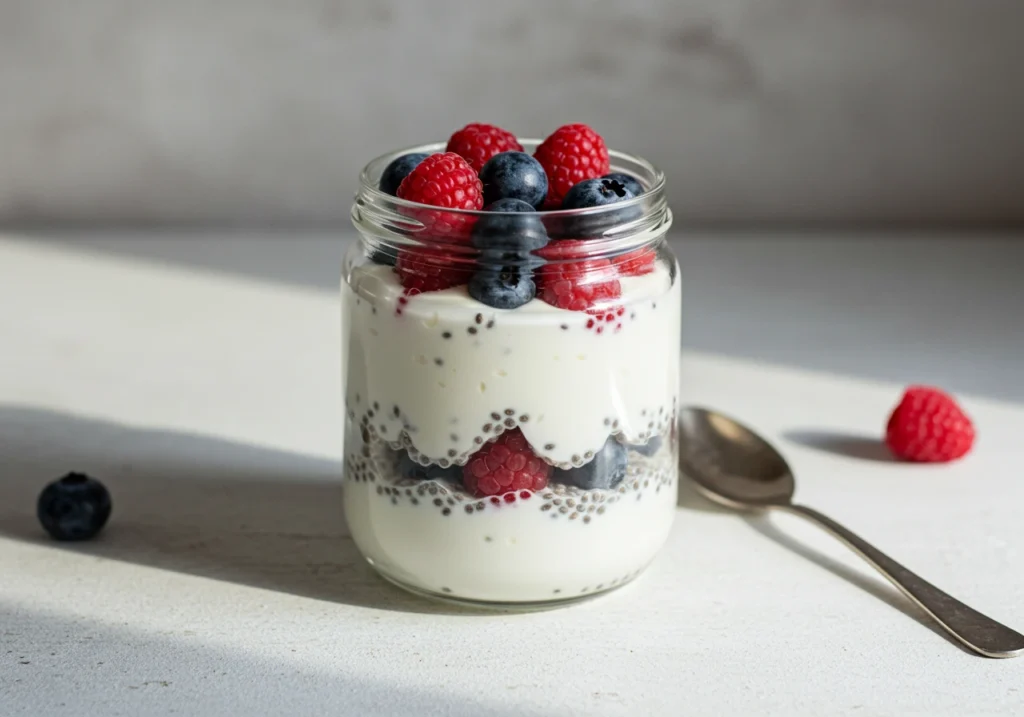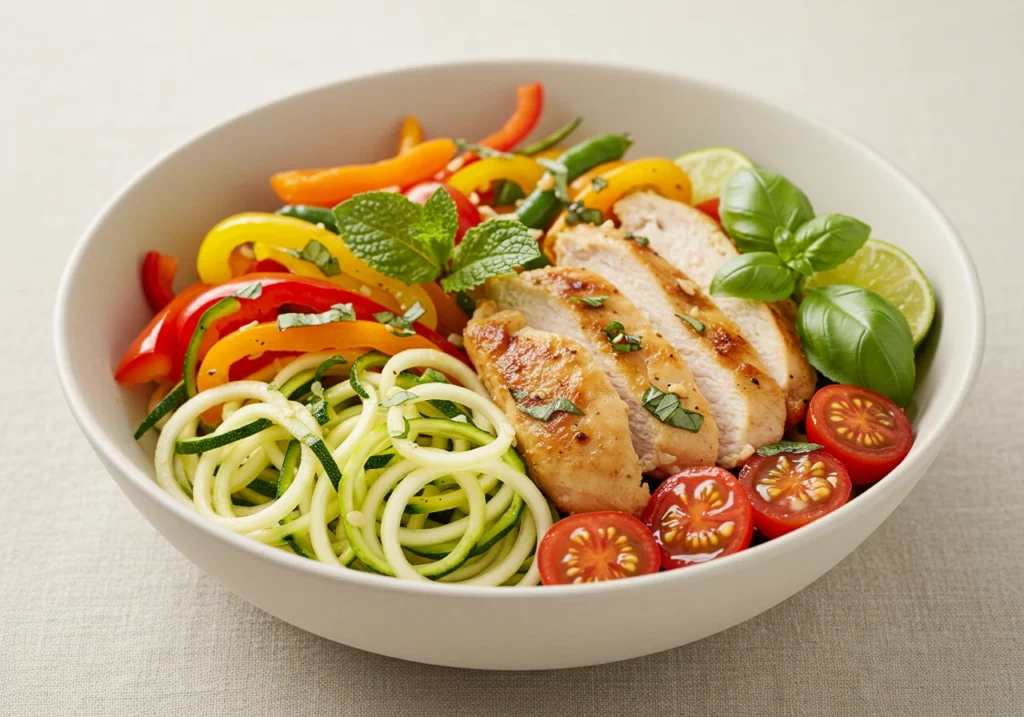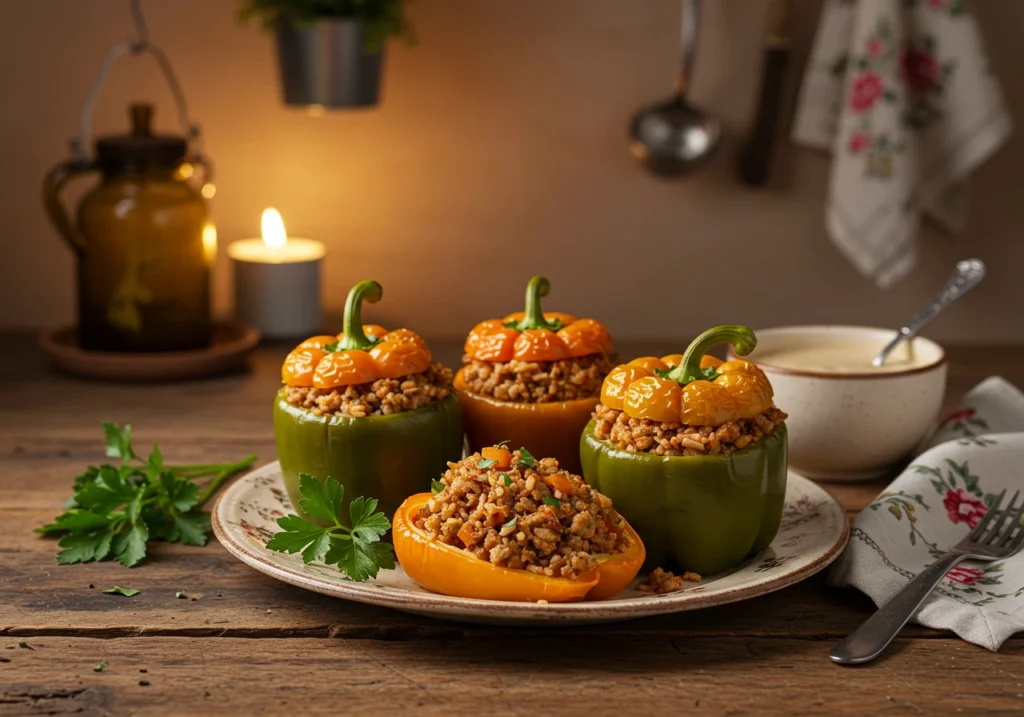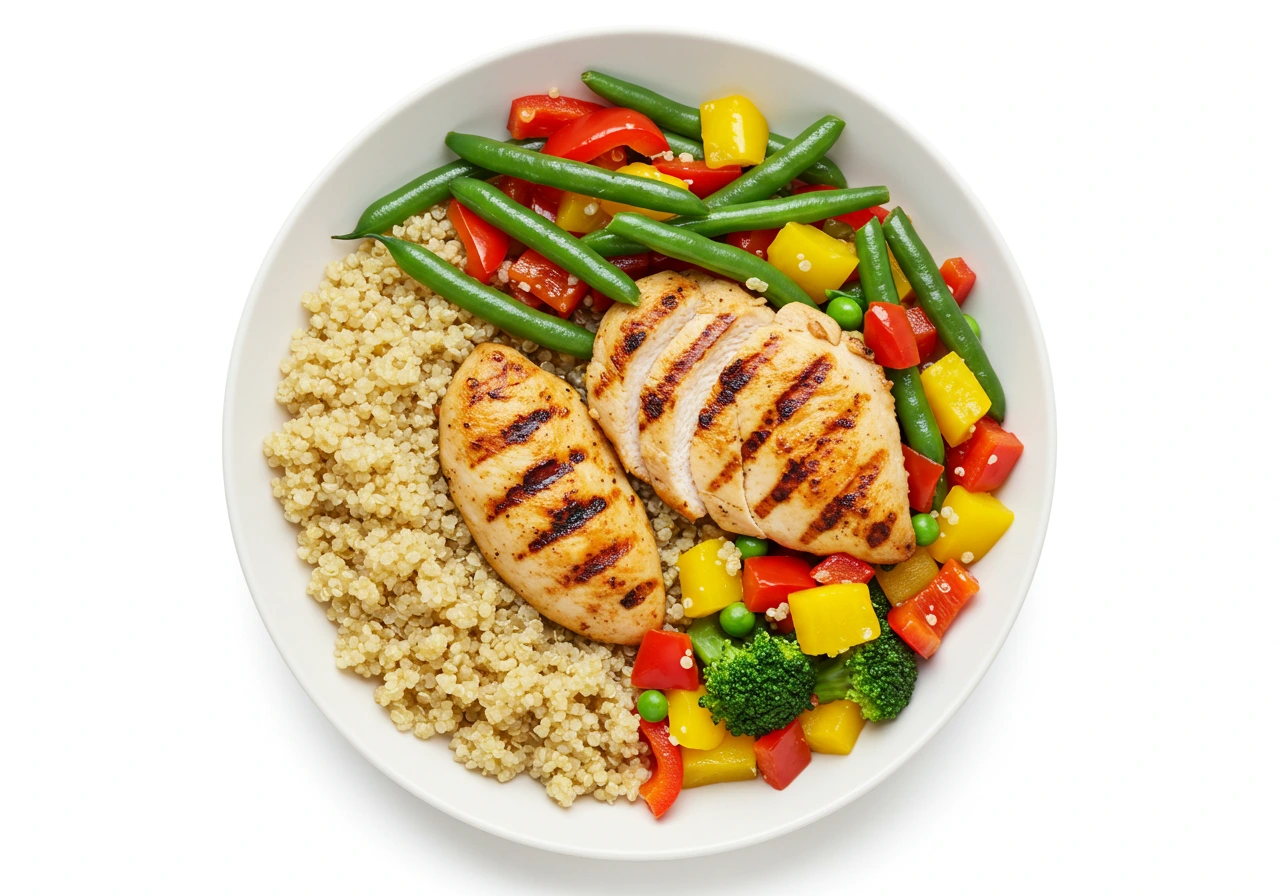Introduction
Life after bariatric surgery comes with many changes, but none are as impactful—or as misunderstood—as the new approach to eating. Gone are the days of large plates and sugary snacks. Instead, you step into a new world of mindful eating, where every bite matters. That’s exactly where the bariatric recipe comes in. This guide is your delicious, protein-packed passport into a better post-op lifestyle—one meal at a time.
This article isn’t just about what to eat—it’s a journey into the how, why, and when of building flavor-packed meals that cater to your nutritional needs. Whether you’re fresh out of surgery or several years into your transformation, this comprehensive breakdown will help you thrive—without sacrificing taste.
Part 1: Introduction to bariatric recipe
Understanding Bariatric Surgery and Dietary Needs
If you’re new to this journey, you may wonder—why can’t I just eat less of the same foods? Here’s the kicker: bariatric surgery isn’t just about restriction. It’s a metabolic reboot. Your body absorbs fewer nutrients, your stomach holds less, and suddenly, macronutrients like protein, fiber, and low-glycemic carbs become top-tier VIPs in your diet.
Whether you’ve had gastric bypass, sleeve gastrectomy, or another procedure, the dietary rules shift dramatically. You now need high-protein, low-fat, and low-sugar meals—served in small, frequent portions. Not only to lose weight effectively but to stay energized and avoid deficiencies.
That said, eating doesn’t have to be boring. In fact, it shouldn’t be. Think creamy Greek yogurt parfaits, tender grilled chicken zoodles, or even a fluffy cottage cheese pancake. Every meal can still bring joy if made intentionally.
So what makes a meal bariatric-friendly? Here’s the lowdown:
- High in lean protein
- Low in sugar and refined carbs
- Packed with vitamins and minerals
- Easy to digest and chew
- Mindfully portioned
But don’t sweat it if this feels overwhelming. This guide simplifies everything and, better yet, gives you real recipes that I’ve tested and tasted myself.
The Role of Bariatric Recipes in Long-Term Health
Let’s be real—surgery is just the beginning. Your long-term success depends on what goes on your plate every single day. According to the Cleveland Clinic, consistent, balanced meals help prevent nutritional deficiencies, support weight loss, and keep your metabolism revving like a champ.
But here’s something many people overlook: emotions. Yep, food is deeply tied to how we feel. That’s why healthy bariatric recipes aren’t just about ingredients—they’re about empowering you to feel confident in the kitchen and in your body.
One thing I learned personally after surgery? It’s all about experimenting. You’ll find your groove, learn what settles well, and tweak flavors to suit your new lifestyle. The trick is to enjoy the process—and that’s what this guide is here for.
Why Meal Planning is a bariatric recipe Lifesaver
We’ve all been there—coming home starving, staring into the fridge, and reaching for something quick (and usually not so healthy). But after bariatric surgery, spontaneous eating can backfire big time. Meal planning keeps you on track, curbs cravings, and prevents hanger-fueled decisions.
Here’s how a good bariatric recipe meal plan helps:
- Keeps nutrient intake balanced
- Reduces temptation to snack on empty calories
- Makes grocery shopping a breeze
- Helps you prep portions in advance (hello, freezer meals!)
And hey, if you want some solid tips on structuring your meals, check out this meal prepping article from EatRight.org. It’s golden.
Adapting Your Favorite Comfort Foods
Newsflash: you don’t have to say goodbye to all your favorite meals. You just have to get creative. The best part? Many classic dishes can be adapted into bariatric-friendly versions by making just a few smart swaps.
For example:
- Use Greek yogurt instead of sour cream
- Try almond flour for low-carb baking
- Swap spaghetti for zucchini noodles (aka zoodles!)
- Blend beans or tofu for protein-rich dips and spreads
As someone who adored pasta and tacos, I can tell you—yes, it’s possible to still love your food. You just gotta give it a makeover.
And let’s be honest, it feels pretty badass to turn a calorie-heavy recipe into a protein-rich powerhouse. Not only are you feeding your body what it needs, but you’re also proving to yourself how strong and resourceful you’ve become.
Part 2: Essential Components of bariatric recipe
Alright, now that we’ve laid the foundation, it’s time to unpack what really makes a bariatric recipe shine from a nutritional standpoint. You don’t just want a “healthy” plate—you want a smart plate. One that delivers all the essentials your body needs to stay strong, energized, and on track after surgery.
From protein-rich foods to the right way to sip your water, this section covers the building blocks of a successful bariatric diet—and spoiler alert—it’s more flexible than you think.
Key Nutritional Elements of a Bariatric Recipe
Post-bariatric life is a balancing act of nourishment and portion control. Since your stomach’s size is reduced, you’ve gotta make every bite count. It’s like putting premium fuel in a luxury engine—low-quality won’t cut it.
Protein: The Building Block
Let’s cut to the chase—protein is king in the bariatric world. After surgery, your body needs it to repair tissue, preserve lean muscle, and keep hunger at bay. The kicker? You can’t eat huge portions anymore, so high-quality sources are crucial.
Here are a few bariatric-friendly protein MVPs:
- Lean poultry like grilled turkey or chicken
- Eggs and egg whites
- Nonfat Greek yogurt (seriously, a protein powerhouse!)
- Tofu and legumes
- Low-fat cottage cheese
- Protein shakes or bars (when whole foods don’t cut it)
When I first started my bariatric meal prep, Greek yogurt quickly became my ride-or-die. I’d mix it with cinnamon, chia seeds, and berries—it tasted like dessert but worked like fuel.
According to BariatricMealPrep.com, aiming for 60–80 grams of protein a day is a smart target in the early months post-op. And hey, if you’re not tracking yet, now’s the time to get on board. It’s a game-changer.
Vitamins and Minerals
Here’s something many folks overlook—micronutrients. Bariatric surgery can affect how well your body absorbs vitamins and minerals, especially B12, calcium, iron, and vitamin D. That’s why supplementation isn’t optional—it’s non-negotiable.
But you can (and should!) support your needs through food:
- Spinach and kale for iron and folate
- Fortified cereals and plant-based milks for B12 and calcium
- Fatty fish and eggs for vitamin D
- Nuts and seeds for zinc and magnesium
And yes, I get it—some days your appetite’s on snooze mode. That’s where smart choices come into play. A spoonful of almond butter or a veggie omelet with spinach can easily deliver those precious nutrients in just a few bites.
In fact, EatingWell recommends combining whole food sources with chewable supplements to cover all your bases. It’s all about creating layers of nutrition.
Hydration and Fluid Intake
You’d think sipping water would be the easy part, right? But post-surgery, drinking becomes a bit of an art form. You can’t guzzle anymore—you’ve got to sip slowly and often.
Why it matters:
- Dehydration is one of the top reasons for readmission after bariatric recipe surgery.
- Proper hydration supports digestion, energy, and appetite regulation.
- Fluids help prevent kidney stones, which can be more common post-op.
According to Verywell Health, most people need at least 64 ounces of water per day—but no drinking 30 minutes before or after meals. Sounds tricky, but trust me, once you schedule it like a habit, it becomes second nature.
Hot tip? Carry a marked water bottle with hourly goals. It keeps you accountable and makes tracking a breeze.
Portion Control and Meal Frequency
Now, onto the real challenge: eating less without feeling deprived. The truth is, your new stomach can only handle about 1/4 to 1/2 cup of food in the beginning. That’s not a lot. But here’s where mindful portion control and consistent meal timing step in like superheroes.
Understanding Portion Sizes
Let’s be honest—portion distortion is real. Most of us grew up with giant plates and endless refills. But after surgery, overeating can cause pain, nausea, and even vomiting. Yikes.
Here’s how to keep your portions in check:
- Use small plates or toddler-sized dishware
- Eat slowly—like 20 to 30 minutes per meal
- Stop eating at the first sign of fullness (not when the plate’s empty!)
- Practice the “30-bite rule” if needed: chew thoroughly and pause between bites
And get this: Mercy Health suggests that portion awareness is one of the top predictors of long-term success. Your eyes need to adjust to your new normal—and they will.
If you need visual cues, check out tools like bariatric portion control plates on Pinterest or browse the free guides from Bariatric Eating. They’ve been a lifesaver for me.
Meal Timing
Eating small meals frequently isn’t just about comfort—it’s about fueling your metabolism. Most post-op patients thrive on 5–6 mini-meals per day. But consistency is the secret sauce here.
Benefits of regular meal timing include:
- Preventing energy crashes
- Keeping blood sugar levels steady
- Avoiding ravenous hunger (which leads to bad decisions, let’s be honest)
Experts at Centre Médical Rochester recommend creating a “food clock.” Basically, set specific times to eat, and stick to them. No skipping, no grazing. That way, your metabolism stays active, and your body gets used to a predictable rhythm.
Pro tip? Set alarms on your phone. It might sound excessive, but during my first 90 days post-op, those reminders helped me stay consistent when everything else felt chaotic.
Part 3: Breakfast bariatric recipe
Waking up after bariatric surgery means more than just ditching the drive-thru breakfast sandwich—it means embracing foods that give you fuel without making you feel bloated or zapped. Your morning meal sets the tone for your energy, mood, and metabolism for the rest of the day. And the truth? You can love breakfast again—even with limited capacity and stricter macros.
In this section, we’re diving into high-protein bariatric breakfast recipes that are light, delicious, and totally doable—even on a busy weekday. I’ve personally made and loved these, and I promise, they’ll make your morning meals something to look forward to.
High-Protein Breakfast Options to Start Your Day Strong
Post-surgery, mornings can be tricky. You’re not always hungry, and traditional breakfasts—like sugary cereal or toast—simply won’t cut it. What your body needs is clean protein paired with easy-to-digest ingredients that go down smooth and stay satisfying.

So, what qualifies as a stellar bariatric breakfast recipe? Here’s what you’re aiming for:
- At least 10–15g of protein
- Low sugar and carb content
- Easy to chew and swallow
- Quick to prepare or meal-prep friendly
Let’s break down two tried-and-true recipes that check every single box.
Greek Yogurt Parfait
I’ll admit—this one quickly became a morning staple for me because it’s creamy, refreshing, and packs serious protein. Best of all? It takes 2 minutes flat to make.
Ingredients:
- ½ cup nonfat plain Greek yogurt (12g protein right there!)
- ¼ cup fresh berries (blueberries, strawberries, raspberries—take your pick)
- 1 tsp chia seeds
- 1 tbsp crushed walnuts or sliced almonds (optional)
- 1 tbsp no-sugar-added granola (choose one with less than 5g sugar)
Instructions:
- In a small glass or jar, layer half the yogurt at the bottom.
- Add a layer of berries, chia seeds, and a sprinkle of nuts.
- Top with the remaining yogurt and finish with granola.
- Optional: drizzle with a tiny splash of sugar-free vanilla syrup.
Pro Tips:
- If you’re early post-op, skip the nuts and granola to keep it smooth.
- Let it sit overnight in the fridge for a pudding-like texture.
According to CelebrateVitamins.com, Greek yogurt is not only a top-tier protein source but also supports gut health thanks to its natural probiotics. And when topped with berries? You’re getting antioxidants and fiber in one swoop.
Bariatric Eating even recommends yogurt parfaits as a versatile option for patients experiencing taste changes after surgery. It’s light on the stomach, high in value, and tastes like dessert (without the guilt). That’s a win in my book.
Cottage Cheese Pancakes
Now, if you’re craving something warm, fluffy, and pancake-adjacent—you’re gonna love these. They’re tender, protein-rich, and freezer-friendly too.
Ingredients:
- ½ cup low-fat cottage cheese
- 2 tbsp oat flour (or almond flour if keeping it low-carb)
- 1 egg
- 1 tsp vanilla extract
- Pinch of cinnamon (optional)
Instructions:
- Blend all ingredients in a small blender or food processor until smooth.
- Heat a nonstick pan on medium-low and spray with cooking spray.
- Pour 2–3 tbsp of batter per pancake into the pan.
- Cook each side for 2–3 minutes until golden and set.
Optional toppings:
- Dollop of Greek yogurt
- Fresh fruit slices
- Sugar-free syrup or almond butter drizzle
These pancakes have a custard-like inside and a mild, slightly sweet flavor that pairs well with all kinds of toppings. I’ve even made a batch and tossed them in the freezer for grab-and-go days.
The Sun once featured a post-op patient who said swapping traditional flapjacks for protein pancakes was “the best swap she ever made.” And honestly? I get it. You still get that cozy breakfast vibe—just minus the carb crash.
Bariatric Eating also highlights cottage cheese as a “super sneaky” protein because it’s soft, high in casein (a slow-digesting protein), and easy to work into both sweet and savory dishes.
Quick Nutritional Breakdown (per serving)
| Recipe | Protein | Carbs | Fat | Calories |
|---|---|---|---|---|
| Greek Yogurt Parfait | 15g | 12g | 5g | ~160 |
| Cottage Cheese Pancakes | 18g | 8g | 4g | ~180 |
Part 4: Lunch bariatric recipe
Let’s talk midday meals. Lunch is often the trickiest to get right post-surgery. You’re juggling work, errands, maybe even a toddler meltdown—and all while trying to eat something that’s high in protein, light on carbs, and won’t send your energy crashing by 3 p.m. Yeah, we’ve all been there.
That’s why bariatric lunch recipes need to be practical, flavorful, and super easy to prep in advance. Whether you’re working from home or packing it to go, these recipes deliver nutrient density without sacrificing taste—or your schedule.
Nutrient-Dense Lunch Ideas That Don’t Weigh You Down
After surgery, you can’t just grab a sub or skip meals without consequences. Lunch has to nourish you without overwhelming your new stomach. But good news? You don’t need huge portions to feel satisfied. It’s all about combining lean protein, healthy fats, and fiber-rich veggies in fun, creative ways.

In this section, we’ll dig into two bariatric-friendly lunch recipes that are easy to make and delicious to eat—even reheated. Spoiler: one of them might just replace your favorite pasta dish.
Zucchini Noodles with Grilled Chicken
This one’s a total game-changer for pasta lovers. Zucchini noodles (aka zoodles) are light, refreshing, and mimic that twirlable texture without any of the post-carb bloat. Paired with lean grilled chicken? You’ve got a low-carb, high-protein masterpiece.
Ingredients:
- 1 medium zucchini (spiralized or sliced into ribbons)
- 3 oz grilled chicken breast, sliced thin
- 1 tbsp olive oil or avocado oil
- 1 garlic clove, minced
- 1 tbsp grated Parmesan cheese (optional)
- Salt, pepper, Italian herbs to taste
Instructions:
- Heat oil in a nonstick skillet over medium heat.
- Sauté garlic until fragrant, then toss in the zucchini noodles.
- Cook for 2–3 minutes until slightly softened.
- Add grilled chicken and seasoning, heat through.
- Plate and top with Parmesan if using.
This dish is filling without being heavy—and if you’re feeling bold, a touch of lemon zest adds a zippy finish.
According to Bariatric Eating, using spiralized veggies is a clever way to recreate comfort food with fewer carbs and more fiber. And trust me, this dish reheats beautifully, making it a meal-prepper’s dream.
Tuna Salad with a Twist
Let’s be honest—tuna salad can be a little…meh. But this revamped version adds crunch, sweetness, and a surprising freshness that wakes up your taste buds. Plus, it’s crazy simple and packed with omega-3s.
Ingredients:
- 1 can tuna in water (drained)
- 1 tbsp light mayo or plain Greek yogurt
- ¼ small apple, finely chopped (granny smith or honeycrisp)
- 1 tbsp diced celery
- Salt, pepper, and a dash of paprika
- Optional: 1 tsp Dijon mustard or a squeeze of lemon juice
Instructions:
- Combine all ingredients in a bowl.
- Stir until well mixed and creamy.
- Serve in lettuce cups, on a small whole-grain cracker, or solo with a fork!
Why the apple? It adds texture and natural sweetness without adding much sugar. This little upgrade totally transforms a boring salad into something crave-worthy.
According to Bariatric Eating, incorporating fruits in small amounts with proteins can help keep things exciting for the palate, especially when taste changes occur post-op.
Quick Nutritional Snapshot (per serving):
| Recipe | Protein | Carbs | Fat | Calories |
|---|---|---|---|---|
| Zucchini Noodles w/ Chicken | 22g | 6g | 8g | ~210 |
| Tuna Salad with Apple | 19g | 5g | 6g | ~180 |
Part 5: Dinner Bariatric Recipes
Dinner—the grand finale of the day’s meals—can often feel like a dilemma after bariatric surgery. You’re hungry, yes, but you can’t just pile up a plate like you used to. You want something warm, hearty, and deeply satisfying… yet still light, high in protein, and easy to digest.
That’s where thoughtfully crafted bariatric dinner recipes save the day. These meals aren’t just filling—they’re deeply nourishing, easy to portion, and packed with flavor that won’t leave you eyeing the snack cupboard two hours later.
Below are two of my go-to recipes that prove bariatric-friendly dinners can be just as comforting and drool-worthy as their traditional counterparts.
Satisfying Dinner Choices for the Bariatric Lifestyle
Dinner plays a key role in winding down your metabolism without triggering discomfort or cravings later at night. With smaller meal sizes and earlier eating windows, dinner should be:
- Packed with lean protein
- Complemented by fibrous veggies
- Easy on the carbs and fats
- Cooked in gentle methods (baking, steaming, sautéing)

These two bariatric-approved recipes do all that and more—while tasting like something you’d order at a cozy bistro.
Baked Citrus Salmon
This dish hits that sweet spot between “simple weeknight dinner” and “restaurant-worthy elegance.” The citrus cuts through the richness of the salmon, creating a light, flaky fish that’s rich in omega-3s and perfectly bariatric-approved.
Ingredients:
- 4 oz fresh salmon fillet
- 1 tsp olive oil
- Juice of half an orange + half a lemon
- 1 garlic clove, minced
- Fresh parsley, dill, or thyme
- Salt and pepper to taste
- Optional: lemon slices for garnish
Instructions:
- Preheat oven to 375°F (190°C).
- Place salmon on foil or parchment in a baking dish.
- Drizzle with olive oil, citrus juices, garlic, and seasoning.
- Wrap or tent loosely and bake for 15–18 minutes, or until flaky.
- Serve with steamed broccoli or roasted asparagus.
The result? A bright, juicy, tender fillet that’s light on the tummy but rich in nutrients. And the best part? According to UCLA Health, salmon supports heart health and can even boost your mood post-op—a big bonus when navigating the emotional waves of bariatric recovery.
Stuffed Bell Peppers
Let me just say this recipe saved me in my early post-op weeks. It’s cozy, flavorful, and customizable—plus, it reheats like a dream. Bell peppers are rich in vitamin C and fiber, while the turkey filling gives you a powerful protein punch.
Ingredients:
- 1 large bell pepper, halved and seeds removed
- 3 oz lean ground turkey
- 2 tbsp diced onions
- 2 tbsp diced tomatoes or tomato sauce (low sugar)
- 1 tbsp shredded part-skim mozzarella or cheddar
- Salt, pepper, oregano, or taco seasoning
Instructions:
- Preheat oven to 375°F (190°C).
- In a pan, brown turkey with onions and seasoning.
- Add tomatoes and simmer until mixture thickens slightly.
- Stuff pepper halves with the filling, top with cheese.
- Bake in a small baking dish for 20 minutes until tender.
You can swap turkey for ground chicken or even tofu if you’re plant-based. And hey, if your pouch is super sensitive, you can puree or finely chop the filling for easier digestion.
This is one of those meals that feels indulgent but totally fits the bariatric blueprint. It’s one of my personal favorites when I’m craving something warm, saucy, and comforting after a long day.
Quick Nutritional Snapshot (per serving):
| Recipe | Protein | Carbs | Fat | Calories |
|---|---|---|---|---|
| Baked Citrus Salmon | 25g | 3g | 10g | ~220 |
| Stuffed Bell Peppers | 21g | 6g | 7g | ~200 |
Part 6: Snack and Dessert Bariatric Recipes
Let’s bust a myth real quick—snacks and sweets aren’t off-limits after bariatric surgery. In fact, the right bariatric-friendly snacks and treats can help you stay energized between meals, prevent cravings, and satisfy that sweet tooth without sabotaging your goals.
But here’s the deal: snacking post-op has to be intentional. Gone are the days of mindlessly munching on chips or cookies. Now, it’s all about protein-forward, low-sugar, and portion-controlled bites that fit your new lifestyle—and still feel like a treat.
Below are two go-to recipes I’ve relied on during my own journey. They’re fun, flavorful, and totally pouch-friendly. Whether you’re after something crispy or creamy, this section’s got you covered.
Healthy Snacks and Treats for Every Craving
Choosing the right snack can mean the difference between staying full and falling off track. So, what makes a great bariatric snack?
- It should include protein or fiber to keep you satisfied
- Be low in added sugar and simple carbs
- Offer flavor without triggering dumping syndrome
- Be quick and easy to prep

Here are two recipes I can’t stop making—and honestly, I never feel guilty about going back for seconds.
Air Fryer Cauliflower Bites
These bites are crispy, golden, and incredibly addictive—without the deep-fried regret. They’re a game-day snack, a movie-night side, or even a meatless main dish if paired with Greek yogurt ranch.
Ingredients:
- 1 small head cauliflower, cut into florets
- 1 tbsp olive oil or avocado oil spray
- 2 tbsp grated Parmesan cheese
- 1 tsp garlic powder
- ½ tsp smoked paprika
- Salt and pepper to taste
Instructions:
- Preheat your air fryer to 375°F (190°C).
- In a bowl, toss cauliflower with seasonings and cheese.
- Spray lightly with oil to coat.
- Place in a single layer in the air fryer basket.
- Cook for 12–15 minutes, shaking halfway through, until crispy.
These little guys are crunchy on the outside, soft on the inside, and bursting with savory goodness. Even non-bariatric friends ask me for the recipe—no lie.
According to CelebrateVitamins.com, cauliflower is a bariatric superfood—rich in vitamin C, high in fiber, and low in calories. Plus, the air fryer method keeps it light and digestible, which is a big win for tender tummies.
Need visual inspo? Pinterest is filled with clever cauliflower twists—and trust me, once you try this, you’ll be inspired to keep experimenting.
Pumpkin Pie Dip
Craving fall flavors without the sugar crash? This pumpkin pie dip delivers all the cozy spice of your favorite seasonal dessert—with none of the crust, bloat, or guilt. It’s perfect with fruit slices, high-protein crackers, or even by the spoonful.
Ingredients:
- ½ cup canned pumpkin (pure, not pie mix)
- ¼ cup nonfat Greek yogurt or light cream cheese
- 1 tsp pumpkin pie spice
- 1 tsp cinnamon
- ½ tsp vanilla extract
- 1–2 tsp zero-calorie sweetener (erythritol, monk fruit, etc.)
Instructions:
- In a small bowl, mix all ingredients until smooth and creamy.
- Chill for 20 minutes (if you can wait!).
- Serve with apple slices, banana coins, or a protein crisp.
Seriously—this one’s a life-saver when everyone else is indulging and you don’t want to feel left out. I brought it to a holiday party once and no one guessed it was low-carb.
Not only is pumpkin packed with beta-carotene and fiber, but using Greek yogurt boosts the protein content while keeping the texture silky and rich.
As The Sun once highlighted, many post-op patients struggle with dessert FOMO, but smart swaps like this can totally bridge the gap between craving and control.
And don’t just take my word for it—bariatric recipeMeal Prep has tons of dessert ideas just like this one, designed for post-op success without ever feeling restricted.
Quick Nutritional Snapshot (per serving):
| Recipe | Protein | Carbs | Fat | Calories |
|---|---|---|---|---|
| Air Fryer Cauliflower | 4g | 6g | 7g | ~100 |
| Pumpkin Pie Dip | 8g | 5g | 2g | ~90 |
Part 7: Meal Prepping for Bariatric Diet
Let’s be honest—bariatric recipe success doesn’t just happen. It’s built day by day, meal by meal. That’s why meal prepping is more than just a health trend—it’s your secret weapon. After surgery, you have limited capacity, a busy schedule, and specific nutrient goals to hit. Meal prep helps you crush all three.
Whether you’re a planner by nature or just winging it most days, having a fridge stocked with bariatric-friendly meals makes staying on track effortless. It removes guesswork, curbs impulsive eating, and guarantees your next bite aligns with your goals.
In this section, we’ll explore smart meal prepping strategies I’ve used myself—and still use today—that are specifically tailored to the bariatric recipe lifestyle.
Strategies for Effective Meal Prep
Effective bariatric meal prep isn’t about cooking in bulk for the sake of it. It’s about:
- Building balanced meals with protein as the focus
- Ensuring portion control with accurate measuring
- Making meals that are easy to reheat and gentle on your pouch
With a bit of planning, a few containers, and some creative batching, you’ll save time and always have a nutrient-rich option within arm’s reach.
Planning Weekly Menus
Planning isn’t just helpful—it’s everything.
Start by mapping out 5–6 days of meals with an emphasis on variety and nutrients. Rotate your proteins (chicken, fish, eggs, tofu), mix up the veggies, and play with different textures and flavors to keep things exciting.
Here’s how I approach it:
- Choose 2 proteins, 2 veggies, and 1 carb source per week
- Cook in batches and mix/match throughout the week
- Schedule leftovers as next-day lunches
- Add high-protein snacks like Greek yogurt cups or hard-boiled eggs
Apps like MyFitnessPal or Baritastic are great for tracking nutrition and planning menus ahead. And as bariatric recipe Eating recommends, “Keep it simple, colorful, and high in protein.”
Pro tip? Use sticky notes on your fridge for each day’s meals—it makes grabbing and going a no-brainer.
Portioning and Storage
This step is crucial. Portioning improperly could mean overeating or undernourishment—which is the last thing your body needs post-op.
Here’s what works:
- Use 4 oz or ½ cup containers (especially in the early stages)
- Weigh cooked protein to ensure you hit your macros
- Store sauces separately to prevent soggy meals
- Label each container with the date and contents
Freezer-friendly meals? Absolute lifesavers. I batch-cook turkey meatballs and veggie egg muffins, freeze them, and defrost overnight in the fridge for a quick meal that doesn’t require brainpower.
According to UCLA Health, proper storage not only preserves freshness but ensures food safety, which is critical when your immune system might be slightly compromised during recovery.
Reusable BPA-free containers and mason jars are great choices for both cold and hot options. Just be sure to refrigerate anything within two hours of cooking to avoid bacteria growth.
Part 9: FAQs on bariatric recipe
No matter how many bariatric recipe cookbooks or nutrition guides you flip through, questions still pop up—especially when you’re trying to rebuild your relationship with food after surgery. So let’s clear the air.
In this section, we’re tackling the most frequently asked questions about bariatric recipes. These are the ones that keep showing up in support groups, clinics, and, let’s be real, our late-night Google searches. If you’ve wondered it, chances are you’re not alone—and you’re about to get the answers you need.
What foods are in a bariatric recipe diet?
A bariatric diet is designed to support healing, weight loss, and nutrient absorption after weight loss surgery. It focuses on high-protein, low-sugar, low-fat meals eaten in small portions.
Common foods include:
- Lean meats (chicken, turkey, fish)
- Eggs and egg whites
- Nonfat or low-fat dairy (Greek yogurt, cottage cheese)
- Cooked vegetables (soft-textured or pureed in early stages)
- Legumes and tofu
- Soft fruits (like bananas or cooked apples)
- Protein shakes and supplements
In short, the focus is on dense nutrition in smaller servings. You’re not cutting out flavor—you’re just upgrading your choices.
Will bariatric recipe help you lose weight?
Yes, absolutely—bariatric recipes are created with your surgical anatomy and metabolic changes in mind. Because these meals prioritize:
- High protein (to preserve muscle mass and satiety)
- Controlled carbs (to avoid spikes and crashes)
- Low-fat, low-sugar options (to prevent dumping syndrome)
When followed consistently, these meals naturally support sustainable weight loss and prevent plateaus. Plus, they’re designed to keep you full longer and reduce cravings. It’s not magic—it’s smart nutrition.
Also, because you’re eating smaller portions more frequently, your metabolism stays active throughout the day. That consistent rhythm helps your body burn more efficiently, making bariatric-friendly meals a key part of long-term success.
What is the 30 rule for bariatric recipe surgery?
The 30 rule is one of the golden guidelines in the bariatric recipeworld, and it’s a game-changer for avoiding discomfort and poor digestion.
Here’s how it works:
- No drinking 30 minutes before a meal
- No drinking during the meal
- No drinking for 30 minutes after a meal
Why? Because fluid can:
- Flush food through your small stomach pouch too quickly
- Cause nausea, bloating, or stretching of the pouch
- Interfere with nutrient absorption
As tough as it sounds at first, this habit becomes second nature with practice. Many bariatric patients (myself included) swear by it—it’s not just a rule; it’s a comfort-saver.
Can I ever eat pizza again after gastric bypass?
Yes, you can—but it’s all about how you eat it and what kind of pizza we’re talking about.
You’ll want to skip:
- Thick crusts (too many carbs, tough to digest)
- Greasy meats (like pepperoni or sausage)
- Heavy cheese or fatty toppings
Instead, opt for:
- Thin crust or cauliflower crust
- Light cheese or dairy-free options
- Toppings like grilled chicken, mushrooms, spinach
Or get creative! I’ve made “pizza” using zucchini rounds or low-carb tortillas. Still gives me that comfort-food satisfaction without the heavy aftermath.
As CelebrateVitamins.com suggests, indulging in modified versions of your favorite meals (like pizza!) can keep you emotionally and physically satisfied without falling off course.

